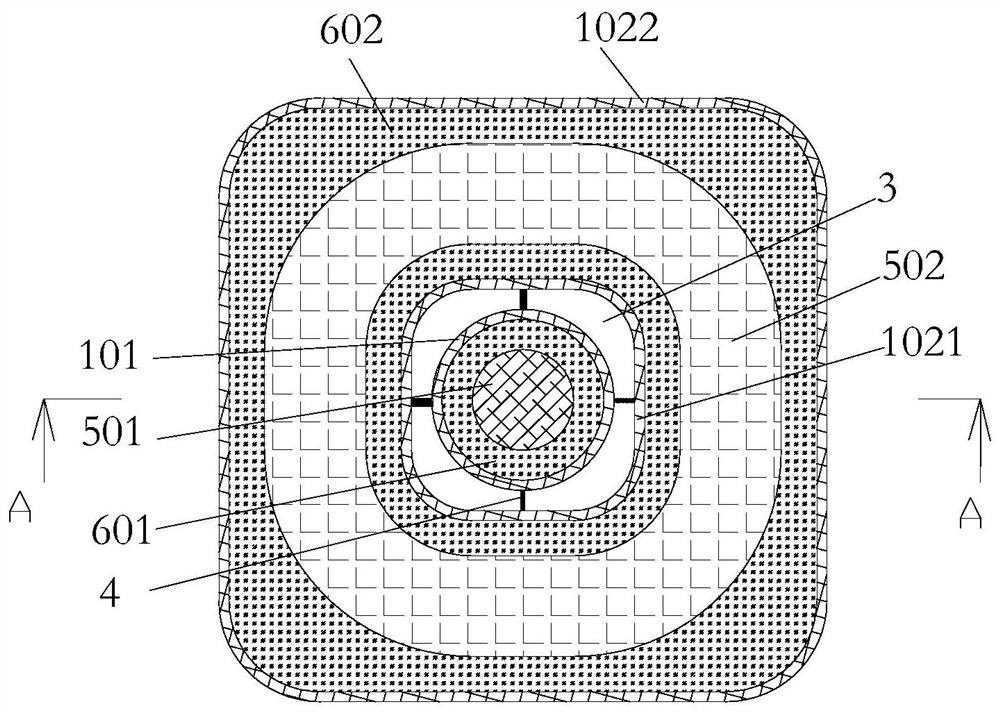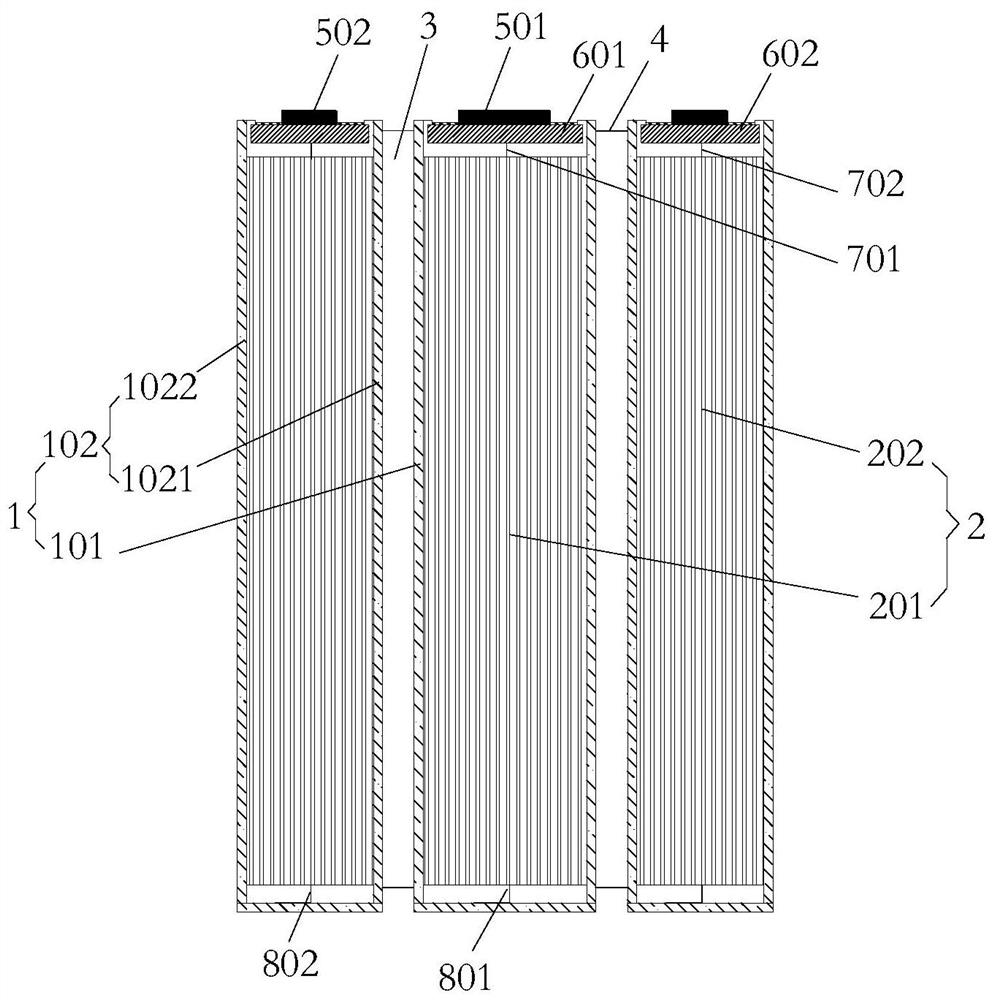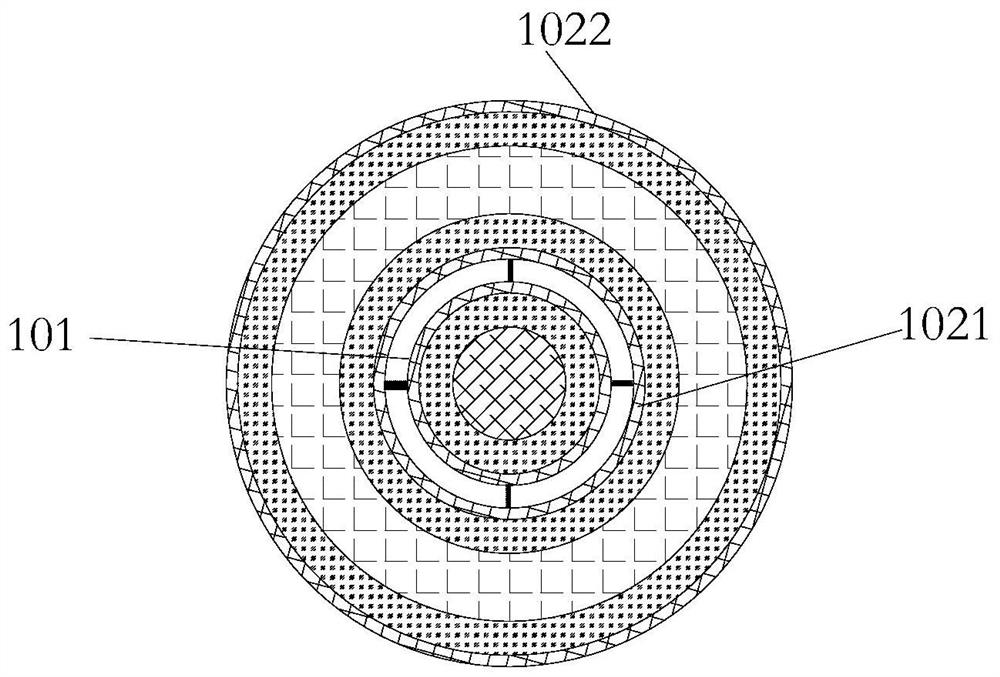Nested structure lithium ion battery capable of reducing risk of thermal runaway
A lithium-ion battery, nested structure technology, applied in the field of lithium-ion batteries, can solve the problems of uneven battery temperature, complex thermal management, difficult heat dissipation or heating, etc., to offset external mechanical damage, high heating efficiency, and safe protection Effect
- Summary
- Abstract
- Description
- Claims
- Application Information
AI Technical Summary
Problems solved by technology
Method used
Image
Examples
Embodiment 1
[0039] Such as figure 1 , 2 As shown, a nested structure lithium-ion battery that reduces the risk of thermal runaway includes a metal case 1 and a cell 2 filled in the case;
[0040]The housing 1 includes an inner cylinder 101 and an outer cylinder 102, both of which are cylindrical structures with a bottom and no cover, wherein the outer cylinder 102 includes an outer wall 1022 and a secondary outer wall 1021, the end surface of the outer cylinder 102 is annular, and the inner cylinder 101 is located in the through hole in the center of the outer cylinder 102. There is a gap 3 between the side wall of the inner cylinder 101 and the secondary outer wall 1021 of the outer cylinder. A metal connecting rib 4 is arranged in the gap 3, and the inner cylinder 101 is connected by the connecting rib 4. It is fixedly connected with the outer cylinder 102 and conducts.
[0041] The cell 2 includes an outer cell 202 and an inner cell 201, the outer cell 202 is filled in the annular ca...
Embodiment 2
[0062] In this example, if Figure 4 , 5 As shown, the gap 3 between the side wall of the inner cylinder and the secondary outer wall of the outer cylinder is filled with a heat conducting material 9 . The purpose of filling the heat-conducting material 9 is to enable the heat conduction between the cells in the outer cell box. This kind of battery is not suitable for assembly in a battery pack that often works in a high temperature environment, but is very suitable for assembly in a battery pack that often works in a low temperature environment. environment in the battery pack.
[0063] In a low-temperature environment, the temperature of the battery is too low when it is used, which will easily lead to a significant decline in battery performance, and it will easily shorten the battery life and reduce the stability and safety of the battery in the long run. Therefore, in a low-temperature environment, the use strategy of this nested battery Different from ordinary lithium-...
PUM
 Login to View More
Login to View More Abstract
Description
Claims
Application Information
 Login to View More
Login to View More - R&D
- Intellectual Property
- Life Sciences
- Materials
- Tech Scout
- Unparalleled Data Quality
- Higher Quality Content
- 60% Fewer Hallucinations
Browse by: Latest US Patents, China's latest patents, Technical Efficacy Thesaurus, Application Domain, Technology Topic, Popular Technical Reports.
© 2025 PatSnap. All rights reserved.Legal|Privacy policy|Modern Slavery Act Transparency Statement|Sitemap|About US| Contact US: help@patsnap.com



